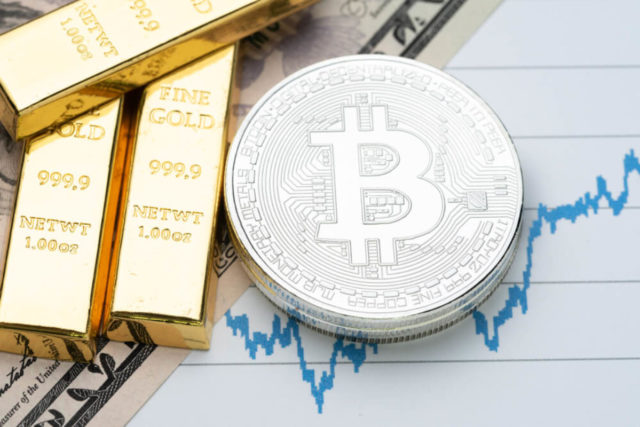Here’s what you need to know on Monday, December 30:
Major currency pairs remain stuck in tight ranges to start the week as trading volumes remain low heading into the end of 2024. November Pending Home Sales and December Chicago Purchasing Managers Index will be the only notable data on the US economic calendar on Monday.
He US Dollar Index (USD) ended the previous week slightly higher. To start the new week, the USD Index remains stable around 108.00. Meanwhile, US stock index futures are trading in negative territory after Wall Street’s major indexes posted big losses on Friday.
US Dollar PRICE Last 7 days
The table below shows the percentage change of the United States Dollar (USD) against the main currencies in the last 7 days. US dollar was the strongest currency against the Swiss franc.
| USD | EUR | GBP | JPY | CAD | AUD | NZD | CHF | |
|---|---|---|---|---|---|---|---|---|
| USD | 0.05% | -0.11% | 0.95% | 0.19% | 0.19% | -0.03% | 1.05% | |
| EUR | -0.05% | -0.20% | 0.86% | 0.11% | 0.20% | -0.11% | 0.98% | |
| GBP | 0.11% | 0.20% | 0.99% | 0.31% | 0.39% | 0.09% | 1.18% | |
| JPY | -0.95% | -0.86% | -0.99% | -0.73% | -0.69% | -0.95% | 0.04% | |
| CAD | -0.19% | -0.11% | -0.31% | 0.73% | 0.05% | -0.22% | 0.86% | |
| AUD | -0.19% | -0.20% | -0.39% | 0.69% | -0.05% | -0.31% | 0.78% | |
| NZD | 0.03% | 0.11% | -0.09% | 0.95% | 0.22% | 0.31% | 1.05% | |
| CHF | -1.05% | -0.98% | -1.18% | -0.04% | -0.86% | -0.78% | -1.05% |
The heat map shows percentage changes for major currencies. The base currency is selected from the left column, while the quote currency is selected from the top row. For example, if you choose the US Dollar from the left column and move along the horizontal line to the Japanese Yen, the percentage change shown in the box will represent USD (base)/JPY (quote).
People’s Bank of China (PBOC) Governor Pan Gongsheng said on Monday that the average deposit reserve ratio for Chinese banks is around 6.6%, adding that compared with central banks in other economies important, this level still leaves room for an adjustment of monetary policy. AUD/USD rises in the European morning on Monday and was last seen trading in positive territory slightly below 0.6250.
EUR/USD failed to move decisively in any direction the previous week. The pair remains stable above 1.0400 in the early European session.
GBP/USD fluctuates in a narrow channel slightly below 1.2600 after posting modest gains on Friday.
The Gold ended the previous week virtually unchanged despite rising more than 0.5% on Thursday. XAU/USD struggles to gain traction early on Monday but remains comfortably above $2,600.
USD/JPY retained its bullish momentum and posted weekly gains for the fourth consecutive time. The pair remains relatively calm around 158.00 in the European morning on Monday.
Feeling of risk FAQs
In the world of financial jargon, the two terms “risk appetite (risk-on)” and “risk aversion (risk-off)” refer to the level of risk that investors are willing to bear during the investment period. reference. In a “risk-on” market, investors are optimistic about the future and are more willing to buy risky assets. In a “risk-off” market, investors begin to “play it safe” because they are worried about the future and, therefore, buy less risky assets that are more certain to provide a return, even if it is relatively modest.
Typically, during periods of “risk appetite”, stock markets rise, and most commodities – except gold – also appreciate as they benefit from positive growth prospects. The currencies of countries that are large exporters of raw materials strengthen due to increased demand, and cryptocurrencies rise. In a “risk-off” market, Bonds rise – especially major government bonds -, Gold shines and safe-haven currencies such as the Japanese Yen, Swiss Franc and US Dollar benefit.
The Australian Dollar (AUD), Canadian Dollar (CAD), New Zealand Dollar (NZD) and minor currencies such as the Ruble (RUB) and the South African Rand (ZAR) tend to rise in markets where there is “appetite for risk.” This is because the economies of these currencies rely heavily on commodity exports for their growth, and these tend to rise in price during periods of “risk appetite.” This is because investors anticipate higher demand for raw materials in the future due to increased economic activity.
The major currencies that tend to rise during periods of “risk aversion” are the US Dollar (USD), the Japanese Yen (JPY) and the Swiss Franc (CHF). The Dollar, because it is the world’s reserve currency and because in times of crisis investors buy US public debt, which is considered safe because it is unlikely that the world’s largest economy will go into default. The Yen, due to the increase in demand for Japanese government bonds, since a large proportion is in the hands of domestic investors who are unlikely to get rid of them, even in a crisis. The Swiss franc, because strict Swiss banking legislation offers investors greater capital protection.
Source: Fx Street
I am Joshua Winder, a senior-level journalist and editor at World Stock Market. I specialize in covering news related to the stock market and economic trends. With more than 8 years of experience in this field, I have become an expert in financial reporting.







